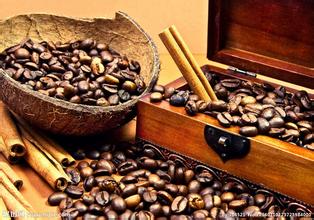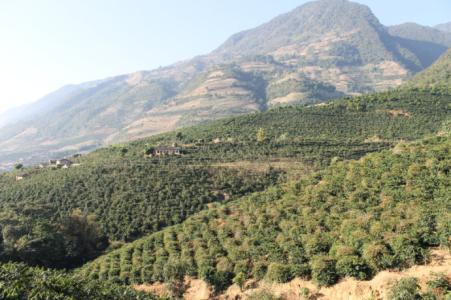With the rapid development of coffee in China, there has been a qualitative breakthrough in the planting area and total output.
According to current market data, emerging countries represented by China, Brazil, Russia, India and South Africa currently consume 20% of the world's coffee, which will reach 35% by 2020.
Domestic consumer groups have a growing demand for coffee. In recent years, major world coffee giants have seized the Chinese market. Domestic coffee companies have also begun to build local coffee brands and carry out deep processing. Produce instant powder, coffee beverages, freshly ground coffee and other coffee products. Domestic coffee is far from enough for the domestic market with huge consumption space in the future. China still needs to import a large amount of coffee. Coffee import increased from 13900 tons in 1998 to 59200 tons in 2015, with an average annual growth rate of about 13.7 percent. Coffee imports mainly come from Vietnam, Indonesia, the United States, Brazil, Malaysia and Colombia.
Market demand has played a good role in promoting the development of the domestic coffee industry. Yunnan, as a major coffee province in China, makes full use of its location and resource advantages to continuously strengthen the international trade of coffee. In 2015, the first "Yunnan New Europe" international freight railway line was opened, followed by the "Chongqing New Europe" post-valley coffee international special train to strengthen the international trade of Yunnan coffee.
Industry-- Industrial Development has stepped into a New era
Chinese coffee has been planted for hundreds of years, but the coffee industry has only been opened for more than 20 years. China's earliest coffee industry appeared in Hainan. Hainan's Lishen Coffee built an annual production line of 325 tons of instant powder. more domestic three-in-one coffee brands use Lishen's instant coffee powder raw materials; due to limited production capacity and relatively backward production technology, Lishen coffee production has been suspended. Starting from 2004, Hougu Coffee invested and 10 million yuan in R & D funds to start the independent research and development of instant powder production line. Finally, on August 8, 2008, the instant powder production line with an annual output of 3000 tons was built. In 2010, Hougu Coffee built another 10, 000 tons instant powder production line, and broke through the production technology of freeze-dried coffee powder. In 2015, another 20,000 tons of instant powder production line was built in Hougu Coffee, which is expected to be put into production by the end of 2016. the new 20,000 ton instant powder production line has realized full intelligent control, and the fully intelligent production of China's coffee industry has achieved zero breakthrough.
Tracing back to the history of Chinese coffee, we have to mention Yunnan. In 1892, French missionary Father Tian succeeded in planting coffee in Dali. Since then, the village of Zhukula began to grow coffee, and the village has been surrounded by coffee trees ever since. This is the origin of Chinese mainland coffee cultivation with a history of testing.
Up to now, the development of coffee industrialization in Yunnan has gone through four stages: from 1952 to 1978, coffee was planted and supplied to the Soviet Union for the needs of national strategy; from 1978 to 1988, most of the land reclamation systems tried to plant coffee, which was a fluctuating stage and an exploratory stage; from 1988 to 2008, after Nestl é entered Pu'er, Yunnan coffee entered a stable development stage, which lasted for 20 years. After 2008, in the past 30 years, relying exclusively on agricultural initial processing, planting and export, the transition to not only agricultural exports but also industry (Hougu has the largest industrial processing base in China), brands, and constantly build and improve the industrial chain. The fourth stage is a stage full of opportunities and challenges, the stage of coffee cultivation facing the transformation from traditional agriculture to modern agriculture, and the stage of expanding international trade and tapping the potential domestic market.

- Prev

Starbucks Coffee strides towards High-end Coffee next year
According to Starbucks, Schultz said that I will focus on innovation next, but I am also pleased to see that our current president, chief operating officer, and my good partner for the past seven years, in the past two years, manages Starbucks in every detail. His succession as CEO means that Starbucks' core business will continue to grow globally in the future. Howard Schultz is not completely unloaded.
- Next

A few tips to easily distinguish latte, mocha and cappuccino
Mocha coffee as one of the oldest coffee in the world, the origin of mocha coffee has long been synonymous with coffee, its unique chocolate aftertaste is repeated, can be described as: aftertaste around the beam, three days in the mouth. Mocha coffee is a variant of Caf Latt, and like the classic caf Latt, it is usually made from one-third espresso.
Related
- The coffee industry is huge! Coca-Cola wants to sell Costa at a low price of 25%?!
- The memories are gone! Shenzhen's last Man Coffee shop is permanently closed!
- What are the characteristics of hand-brewed coffee? How to use the Rao Spin coffee brewing method? Europe and North America share their hand-charging methods!
- How to choose the direction of the circulation of hand-brewed coffee? Should I fill the water clockwise or counterclockwise when making coffee by hand? How do you turn around while making coffee?
- What is the ratio of water to coffee in American coffee? What beans are the best for American coffee? What is the best espresso for American coffee?
- Affected more than 40 cities! Starbucks employees launch an indefinite strike!
- Fortunately, employees disclosed the new black tea latte! Netizen: Replace the short extract
- The flavor difference between hand-brewed coffee at high temperature, medium temperature and low temperature can coffee be heated again
- The difference between single coffee and SOE Why are soe coffee beans more expensive? Soe acid or not
- Fruit porridge?! Chabaidao launches "Solid Poplar Branch Ganlu"

